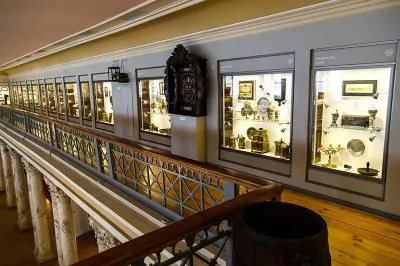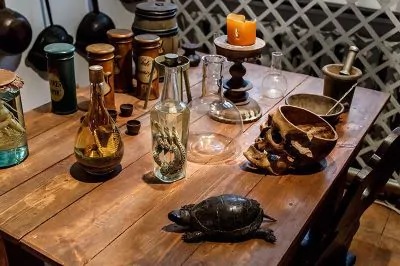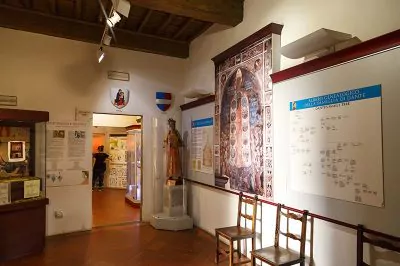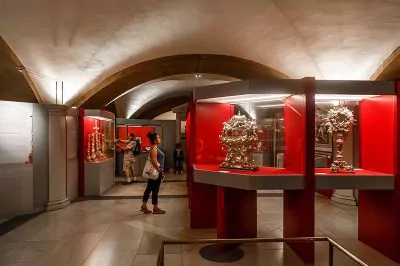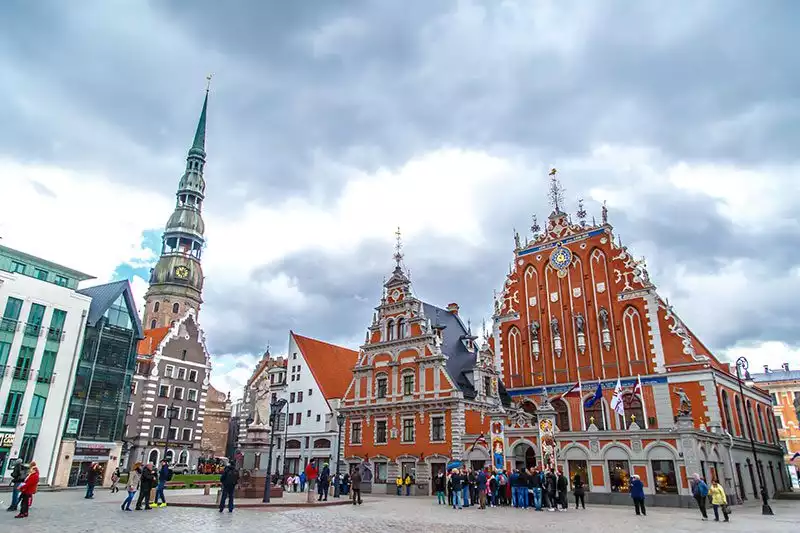
House of Blackheads
The construction of House of Blackheads, one of the architectural treasures of Riga, which makes Riga a fairytale city, started in 1433 when businessmen living in Riga established a guild here. St. Moritus, the head of the businessmen, who was black, was beheaded for defying religion and the building was named the House of Blackheads.
The House of Blackheads, which was badly damaged during the war period when Riga was under the influence of the war period, was demolished in 1941. In 1999, the building was rebuilt according to the original plans, and on the inside we can see the original remains of the building, protected by glass. Repairs and reconstructions led to the inscription Ja man kadreiz sagrüt büs, Mani atkal celiet jüs (If I fall, rebuild me).
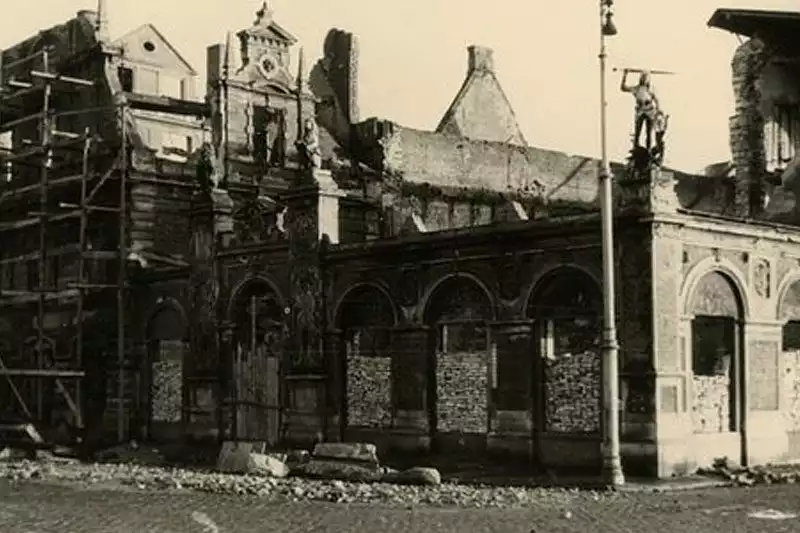
At the top of the building is a blue astronomical clock. This clock also shows the day, month and the relationship of time to the zodiac signs.
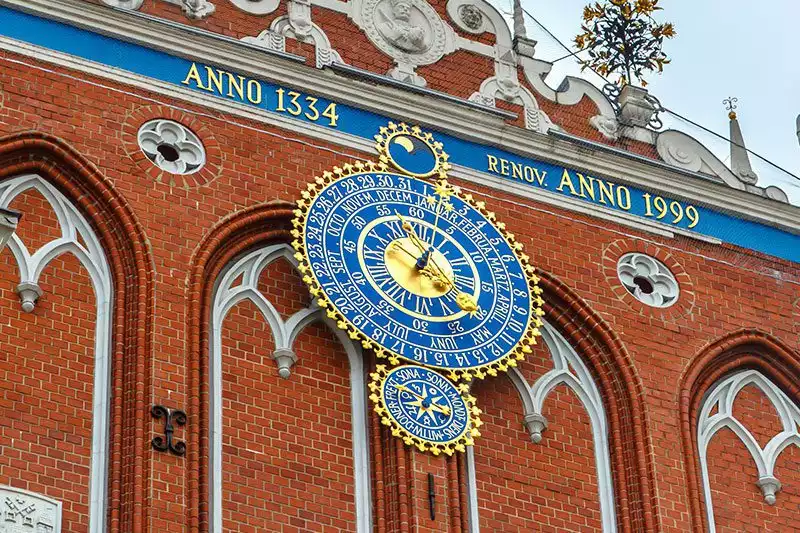
The coats of arms under the clocks used to belong to big businessmen who traded to Riga from other countries.
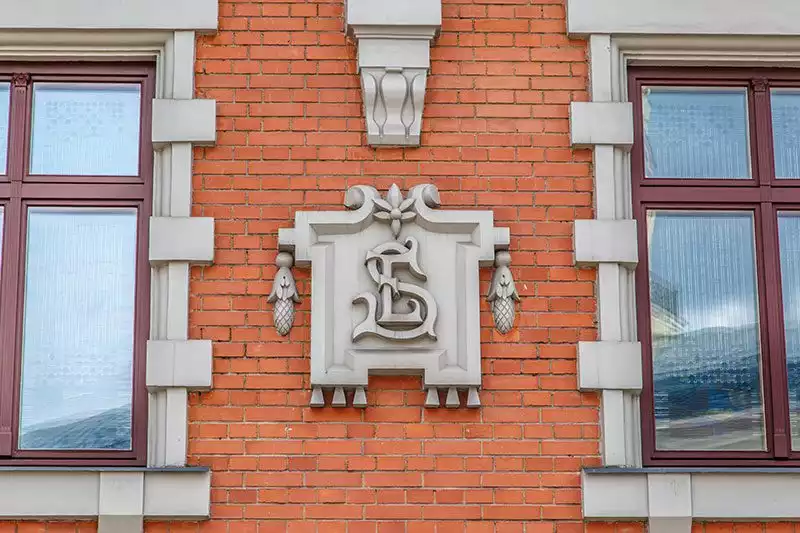
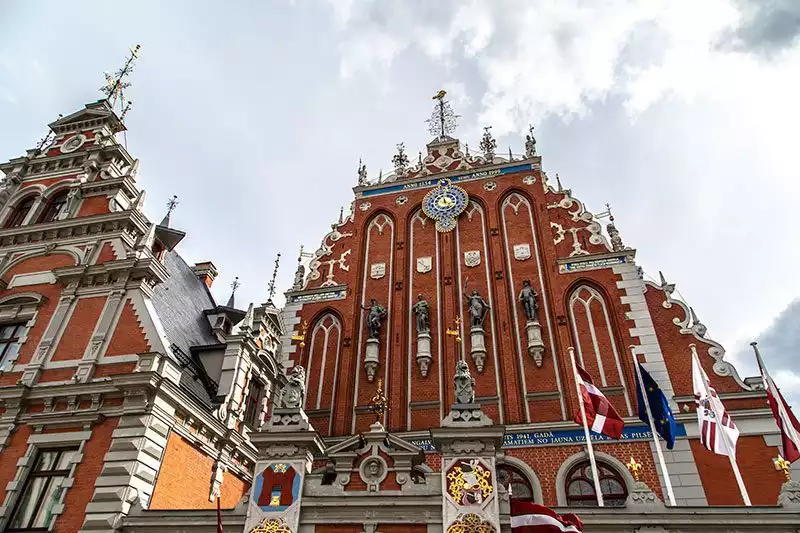
The building to the left of the House of Blackheads is the Schwab House, built in the 19th century. It has similar architectural elements and today it is used as a tourist information office.

In the center of the square in front of the House of the Blackheads is a replica of St. Roland, made by August Voliz in 1894. The original statue is located in St. Peter’s Church. The statue of the young knight Roland, the symbol of justice, which adorns the town square in Riga, is also found in cities such as Bremen and Prague. The 6.8-meter tall character is also the nephew of Emperor Charlemagne.
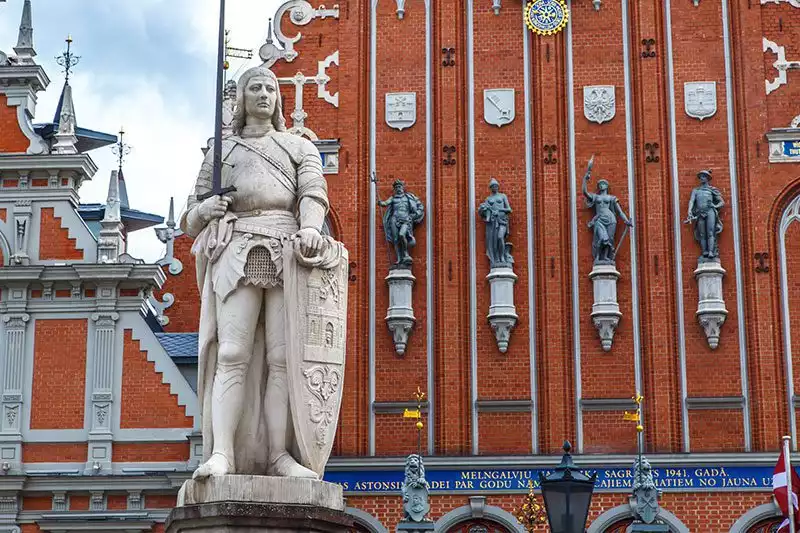
The square in front of the two imposing buildings used to be the site of many celebrations, markets and executions. One Christmas Eve in 1510, the celebrations inside the House of Blackheads overflowed into the square and for the first time in history, decorations were hung on the pine tree in the square accompanied by dances. In the following hours, under the influence of alcohol, the Christmas tree is set on fire. – The place where the tree was set on fire was designated in front of the House of Blackheads building with an octagonal plaque with the inscription “1510 Riga First New Year Tree” in 8 languages. – Although decorating Christmas trees and then burning them has been a tradition for several years, Martin Luther, the founder of Protestantism, put an end to this and instead of burning the Christmas tree completely, he lit candles on it, which led to the realization of Christmas celebrations in the Christian world.
